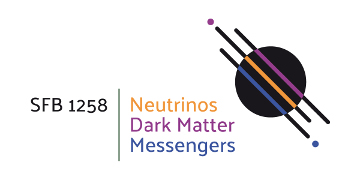date: 27 November 2023, 10:00 - 12:30, with coffee from 9:30
venue: New MPP building in the campus Garching - room A.1.01/03 (main auditorium)
10:00-11:00 Frank Rieger (IPP) - Sgr A* as Cosmic Particle Accelerator
Recent observations at very high energy (VHE) gamma-rays point to the presence of an efficient particle accelerator in the center of our Galaxy, capable of accelerating charged particles (cosmic rays) to energies of ~10^15 eV (PeV). I will review the observational findings and highlight how non-thermal processes in the vicinity of our Galactic supermassive black hole could facilitate particle acceleration to high energies. While the current power of Sgr A* is not enough to enable a substantial contribution to the observed flux of Galactic cosmic rays, Sgr A* is known to have seen more active phases in the past. I will comment on the possible potential of Sgr A* as alternative contributor to the cosmic ray spectrum around the so-called 'knee' at ~ 1 PeV.
11:00-11:30 coffee break
11:30-12:30 Frank Eisenhauer (MPE) - Astronomy at Highest Angular Resolution - Adaptive Optics, Interferometry and Black Holes
The last 25 years have seen wonderful times in high angular resolution, optical/infrared ground-based astronomy: active optics enabled ever larger telescopes, adaptive optics now routinely remove the image blur from the turbulent earth atmosphere, and integral field spectroscopy adds the third, spectral dimension to highest resolution imaging. And most recently, optical/infrared interferometry brought yet another revolution by synthesizing a telescope with an equivalent diameter of a hundred meter and more. We will describe the development and advances in the field, and especially the pioneering GRAVITY instrument. Our presentation takes us from exoplanets all the way to distant quasars, with special focus on the Galactic Center and tests of the massive black hole paradigm. The ongoing upgrades will soon boost optical interferometry to the next level, opening up the extragalactic sky for milli-arcsecond resolution interferometric imaging. We will end with an outlook on expanding optical interferometry to kilometer wide arrays, which will be hundred to thousand times sharper than even the largest single dish telescopes.


